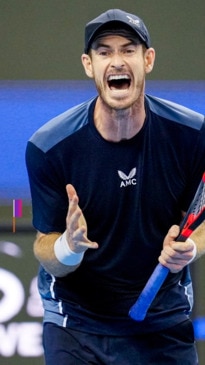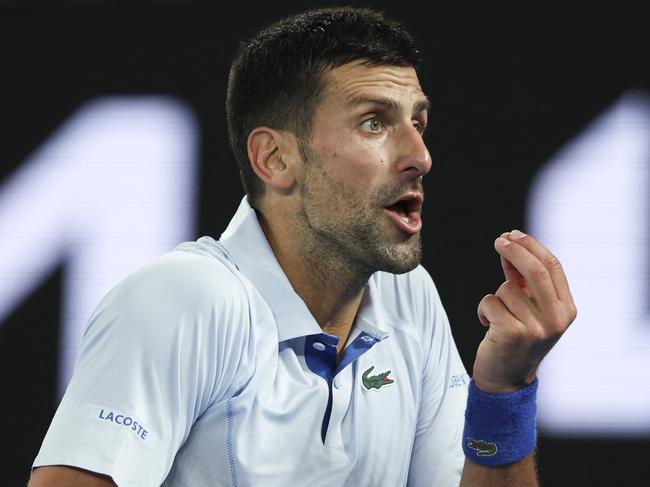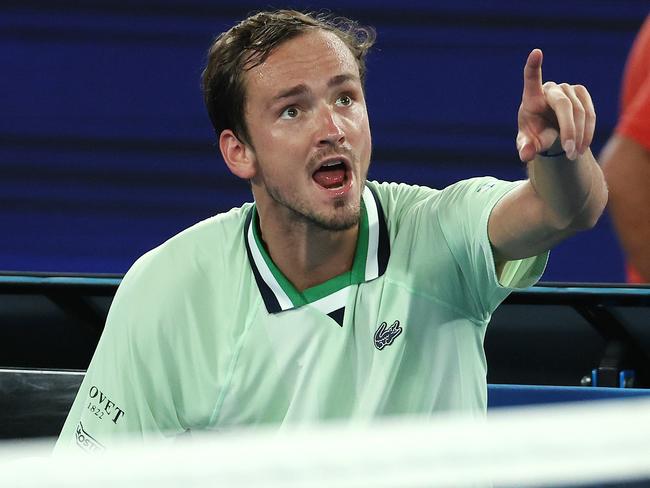Technology will not require the human eye to detect whether a player has encroached on the line
The event is tipped to be the first grand slam to use artificial intelligence in umpiring, following the “skeletal tracking technology’’ used in the NFL and NBA.

Victoria
Don't miss out on the headlines from Victoria. Followed categories will be added to My News.
Australian Open chiefs are considering making Melbourne the world’s first grand slam to replace humans with artificial intelligence in umpiring foot faults.
“Skeletal tracking technology’’ used in global leagues such as the NFL, NBA, MLB and NHL could be served up at Melbourne Park to speed up matches and make tennis more fan friendly.
Industry experts believe the same technology could also help AFL umpires better determine whether balls booted for goal have been touched off the boot.
Rather than cameras focusing on the ball like previous tennis and cricket reviews, the new technology tracks player movement.

Tennis Australia head of innovation Machar Reid said the technology used to help determine off-side calls at the recent European Football Championship would be a game-changer.
“In essence what will happen I suspect next year, whether for the AO or not I couldn’t say because there will be an approval process, the same rationale will apply to foot faults in tennis,’’ he said.
“Where you no longer use the human eye to detect whether a player has encroached on the line or not.
“You are now using technology or skeletal tracking to do the same.’’

If introduced for January’s Open, the technology would send an audio and visual signal to indicate when the world’s best players illegally drag their feet over the service line.
It comes after the Herald Sun this year revealed Tennis Australia chief Craig Tiley would mount a game-changing bid to remove “lets” from the Australian Open and grand slams around the world, to speed the sport up.
“They all feed into the same which is hopefully creating a better, more predictable player experience,’’ Dr Reid said.
“And likewise a speedier fan experience, allowing them to view what they have come to see – the players in action.’’

Industry leaders will discuss the issue as they gather in Melbourne on Wednesday for a Sports Tech of the Future event at Federation Square.
With the AO already the first to make line calls “fully automatic”, Dr Reid said skeletal tracking could aid “real-time technical analysis’’ of players for fans and coaches and even predict injuries.
“The more mainstream this skeletal information becomes, the more possibilities open for the world of sports medicine to understand and make assessments regarding injuries,’’ he said. AFL was a harder sport to monitor due to the size of the field, Dr Reid said, however: “I think the aspiration should be there because there is a way for officiating in sports like footy to be more precise than is the case right now.
“But it’s not just a question of the technology but of the cost to bring that to life.
“The AI will get better … meaning players and coaches will trust the data more and more. And that opens up the possibilities to the likes of the AFL being able to embrace some of the technologies to adjudicate those edge cases around the ball being out of bounds or touches on the ball.’’
AFL creative and innovation director Jonathon Bernard said: “We’re continually looking for new ways to enhance different aspects of the game through technology, including testing our smart-ball to see how it could elevate both the fan and performance data experience.”
Originally published as Technology will not require the human eye to detect whether a player has encroached on the line




